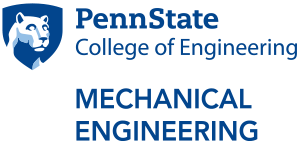Optimal Design of Rotorcraft for Minimum Required Power and Vibration
ABSTRACT: In this talk, we consider the optimal performance of rotorcraft in forward flight, minimizing a linear combination of required shaft power and vibratory hub loads for a trimmed rotor with flexible blades. We begin with a general discussion on the theoretical limits on required shaft power, showing the strong relationship between the wake structure and efficiency. We then consider power requirements and vibratory loads for real (non-ideal) rotors. For real rotors, the aerodynamic forces and power are modeled using a vortex lattice method. A finite element model based on the linearized form of the Hodges-Dowell rotating beam equations is used to model the vibrating blades. Guyan reduction and harmonic balance are used to reduce the number of degrees of freedom. The numerical model is validated against theoretical and experimental models, with generally good agreement. For rotors that use higher harmonic control, the problem of minimizing the required power and/or vibratory loads is cast as a quadratic programming problem requiring a single linear matrix solve to find the optimum. For moderate and high advance ratios, higher harmonic control can reduce hub forces, but with an attendant increase in required shaft power.
BIOGRAPHY: Dr. Kenneth C. Hall received his S.B., S.M., and Sc.D. degrees from the Department of Aeronautics and Astronautics at MIT. He joined the faculty of the Department of Mechanical Engineering and Materials Science at Duke University in 1990, served as Chair of the department from 2001 to 2007, and is currently the Julian Francis Abele Professor of Mechanical Engineering. Dr. Hall's research has focused primarily on novel methods for computing the unsteady aerodynamics, structural dynamics, and aeroelasticity of aerospace vehicles and turbomachinery. Dr. Hall was elected to the National Academy of Engineering in 2020, and is the winner of the 2018 American Institute of Aeronautics and Astronautics Aerodynamics Award, ``For seminal contributions in the development of novel unsteady aerodynamic theories and analysis methods for internal and external flows.'' He is a past Vice President of the ASME, the former Chair of the International Gas Turbine Institute (IGTI) of the ASME, and past Editor of the Journal of Turbomachinery.
Event Contact: Serena Sidwell


